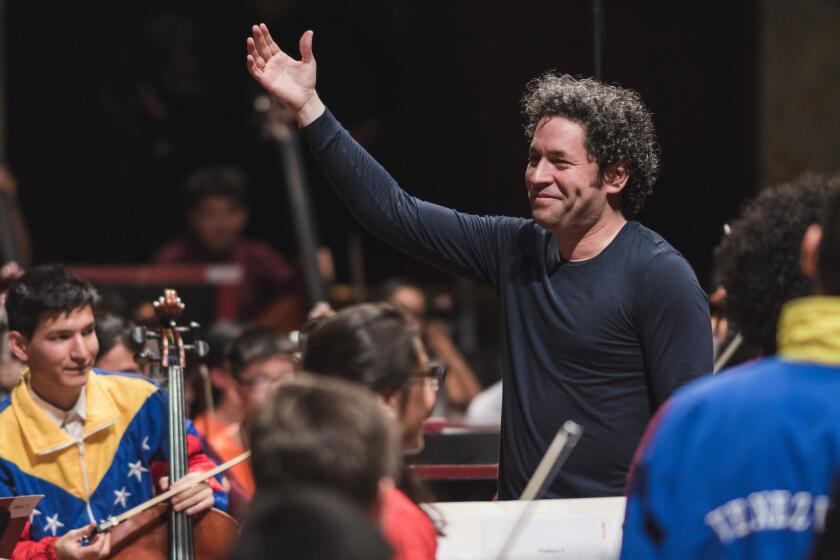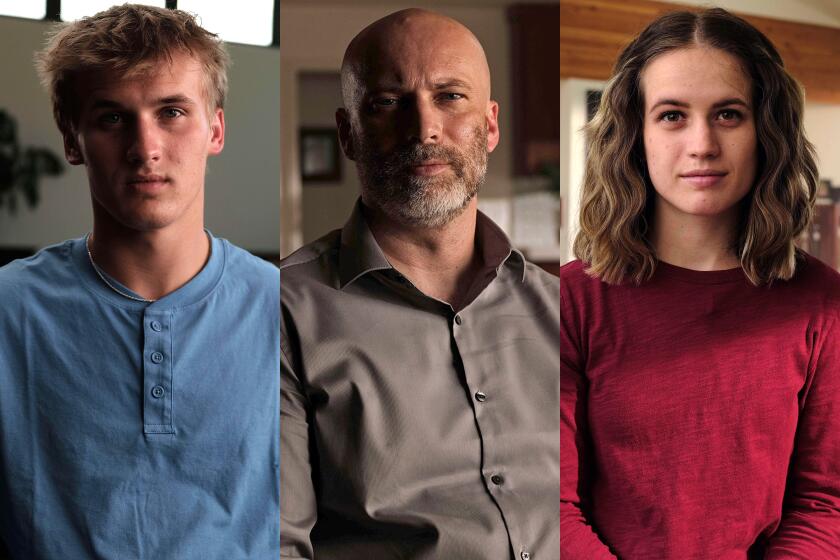- Share via
The plan was simple: take a photo a day, every day, for a year.
For Rafael Cardenas, a Los Angeles photographer known for capturing candid images of life in the city, the plan was a way of staying nimble with his camera — a daily looking exercise that also functions as a visual diary. (He posts one image to his website, rafa.la, every evening.)
The project is also a way of marking an important personal milestone.
Ten years ago, armed with his first professional camera, Cardenas decided he would take pictures in the streets of L.A. every day for a year. Over the 365 days of 2010, he went out every day and didn’t return home until he had at least one image he could post. This was how he became a photographer. In the process, he created a collective portrait of the city, its people, its shifting seasons, its changing light and moods.
“It’s not always about the best picture,” he says of the images he places online. “Sometimes it’s just the vibe that is hitting me. It’s like, ‘This is what I’m feeling, so I’ll go with this.’”
Little did he know when he launched the new series in January that he would record the unspooling of a pandemic.
In February, Cardenas, who lives in Boyle Heights, was shooting portraits of everyday Angelenos. By the end of March, he was documenting empty streets, taped-up picnic tables and furtive pedestrians, their faces obscured by masks.
“I set out to capture everyday life,” he says, “but this is not everyday life.”
Beyond marking an important professional anniversary, the project is a return to the photographer’s creative roots.
Cardenas may have began his career with a focus on street photography, chronicling the daily drama of living, but in recent years he’s turned his attention to more conceptual projects.
Rafael Cardenas didn’t set out to be a photographer. For a time, he worked as a paralegal.
For an ongoing series titled “Backyard Tableaux,” which he showed at the Vincent Price Art Museum in 2018, he captured the intimate gatherings that take place in backyards, primarily on L.A.’s Eastside.
Another project, “Landscapes & Land Dwellers,” connected people with place in diptychs that juxtaposed photographs of people on the street with broad images of landscape. That series was shown at La Plaza de Cultura y Artes in downtown L.A., also in 2018.
This spring, the Los Angeles County Museum of Art acquired four of his prints.
Street photography, however, is a form he’s always happy to return to: “This is back to basics, 100%,” he says. “It’s just me and the camera and no preconceived ideas about what I’m going to capture.”
I set out to capture everyday life, but this is not everyday life.
— Rafael Cardenas, photographer
The project has also kept him going creatively. Cardenas earns a living primarily as an event photographer. That work has dried up as safer-at-home orders have lingered.
Instead, he has focused his energies on selling prints and working on his photo-a-day project. In mid-April, the series caught the eye of curators at San Francisco’s Tenderloin Museum, which featured a few images in an evolving online exhibition for Instagram titled “Shelter in Place.”
“To be able to still be doing this is great,” Cardenas says. “In a way, this has always been my life: stay home, do a few things, make a few pictures. Then the next day, do it again — Groundhog Day.”
What follows are images from a few days in the life of L.A. as seen by Cardenas.
February 17, 2020
Cardenas often sets limitations for himself, maybe shooting only in color or only in black and white. In February, he focused exclusively on color portraiture. On this day, he captured a couple of kids hanging out at the Santa Monica Pier. He says he was drawn by their magnetism. “For this series,” he says, “I was just asking for a quick pic and moving on.”
March 7, 2020
His February portraits represented the last time Cardenas was able to regularly photograph people up close and in color. By March, he had switched to black and white. The changeover occurred as the news began to get darker: The state of Washington declared a state of emergency and coronavirus infections were beginning to mushroom around the Bay Area. At this point, his imagery grew more solemn, capturing this string of lights marking a taco truck. “Not sure where I was mentally at this point,” he says. “Maybe just foreboding.”
March 11, 2020
On March 11, the day the World Health Organization declared COVID-19 a pandemic and L.A. County announced its first known death in connection with the virus, Cardenas snapped a photo of the downtown skyline from his backyard. “I don’t typically do the skyline that you hang by your motivational quotes,” he explains. But that day he remembers “looking at the city with a different weight.”
April 1, 2020
After shooting black and white for the entire month of March, Cardenas went back to color. “I was dying to get some color in my feed,” he says. “I was making myself depressed. I really wanted to post something that had nothing to do with this pandemic.” He found his shot in South Pasadena: a woman in a purple car waiting for the Gold Line to pass. “I love this shot because of how happy it made me to have color that day.”
April 9, 2020
As the weeks have progressed, Cardenas has borne witness to a city that has gone inside itself. Shuttered gates. Closed doors. Empty sidewalks. At this fast food joint in Alhambra, he captured the pattern of caution tape strung over the dining area. Besides leaving the house to photograph, he and his girlfriend go out to walk the dog — sometimes traveling to parks in different neighborhoods so that they can see something new. It was on one of those excursions that he spied the taped-up tables.
April 19, 2020
At the moment, when Cardenas photographs people, he does so at a distance — as if the pandemic were forcing a certain aesthetic. The last few weeks have seen the increasing presence of masks, such as the ones worn by a pair of itinerant musicians sitting on a street corner in Boyle Heights. “The title [‘La enorme distancia’] is from a song that is easily on their repertoire from José Alfredo Jiménez,” Cardenas says of the musicians. “At a distance” is the phrase in English — photography for the age of social distancing.
Previous pandemics — smallpox in the Americas, the plague in Europe — reshaped the ways artists worked. How artists are adapting to coronavirus.
More to Read
The biggest entertainment stories
Get our big stories about Hollywood, film, television, music, arts, culture and more right in your inbox as soon as they publish.
You may occasionally receive promotional content from the Los Angeles Times.












